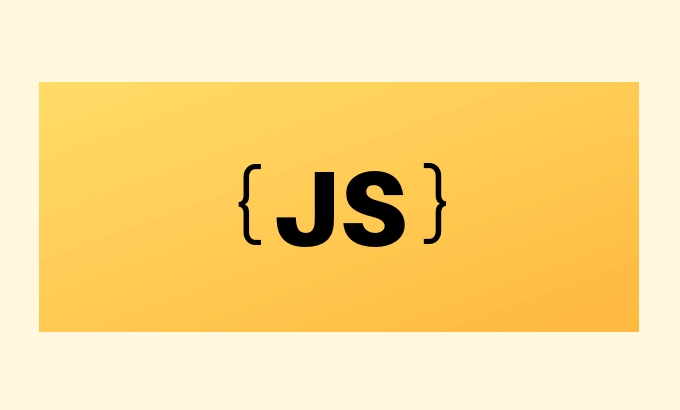Working with Higher-Order Functions in JavaScript
Jul 12, 2025 am 03:12 AMHigher-order functions are functions in JavaScript that accept functions as parameters or return functions. It makes the code more concise and flexible, such as map, filter, reduce and other methods of arrays belong to this category; common higher-order functions include maps for processing each element to generate new arrays, filters for filters, reduces for deductive elements, and forEach for traversal and performing side-effect operations; the benefits of using higher-order functions are concise code, strong readability, support chain calls, and easy to combine and abstract; when using this, you need to pay attention to this context, avoid side effects, and consider performance issues, for example, maps should be used instead of modifying the original array.

It is actually quite common to deal with higher-order functions in JavaScript, especially when writing more concise or flexible code. Simply put, a higher-order function is a function that accepts a function as a parameter or returns a function. This feature makes JavaScript very expressive in functional programming.

Here are some things you may care about when using higher-order functions:

What are higher-order functions?
In JavaScript, functions are first-class citizens, which means they can be passed, assigned, assigned, or even returned like normal variables. When a function receives another function as an argument, or returns a function, it is called a higher order function .
For example, some common methods of arrays map , filter and reduce are examples of typical higher-order functions:

const numbers = [1, 2, 3, 4]; const doubled = numbers.map(n => n * 2);
Here map receives a function as a parameter, so it is a higher-order function.
What are the common higher-order functions?
In addition to array methods, there are some functions you write yourself that can also be higher-order functions. for example:
- map : Process each element in the array and return a new array.
- filter : filter out elements that meet the conditions according to the conditions.
- reduce : "reduce" the array into a value, such as summing, splicing strings, etc.
- forEach : Iterate over the array and perform side effects operations.
You can also define higher-order functions yourself, such as:
function multiplyBy(factor) {
return function(number) {
return number * factor;
};
}
const double = multiplyBy(2);
console.log(double(5)); // Output 10 In this example, multiplyBy returns a new function, which also makes it a higher order function.
What are the benefits of using higher-order functions?
- The code is more concise : reduce duplicate code by reusing existing function logic.
- More readability : for example,
filter(isEven)is easier to understand than writing a bunch of if judgments. - Support chain calls : you can continuously use maps, filters, etc. for data processing.
- Easy to combine and abstract : complex logic can be split into multiple small functions and then combined.
However, be careful not to over-neck, otherwise it may affect readability.
What should you pay attention to when using advanced functions?
- Don't ignore the context of this : If you use higher-order functions in object methods, pay attention to the pointing problem of
this. It can be solved by using arrow functions or bind. - Avoid side effects : For example, modifying external states in
maporfiltercan easily cause bugs. - Performance issues : Although there will be no problem in most cases, efficiency should be considered when creating functions frequently or processing large arrays.
For example:
// Not recommended practice numbers.forEach(function(n, index, arr) {
arr[index] = n * 2; // Modified the original array, with side effects}); A better approach is to create a new array with map instead of directly modifying the original array.
Basically that's it. Advanced functions are not mysterious, but they can indeed help you write more elegant and functional JavaScript code. As long as you understand its basic principles and common usage, it is not difficult to use.
The above is the detailed content of Working with Higher-Order Functions in JavaScript. For more information, please follow other related articles on the PHP Chinese website!

Hot AI Tools

Undress AI Tool
Undress images for free

Undresser.AI Undress
AI-powered app for creating realistic nude photos

AI Clothes Remover
Online AI tool for removing clothes from photos.

Clothoff.io
AI clothes remover

Video Face Swap
Swap faces in any video effortlessly with our completely free AI face swap tool!

Hot Article

Hot Tools

Notepad++7.3.1
Easy-to-use and free code editor

SublimeText3 Chinese version
Chinese version, very easy to use

Zend Studio 13.0.1
Powerful PHP integrated development environment

Dreamweaver CS6
Visual web development tools

SublimeText3 Mac version
God-level code editing software (SublimeText3)

Hot Topics
 How to do functional programming with PHP
Jun 06, 2023 am 08:21 AM
How to do functional programming with PHP
Jun 06, 2023 am 08:21 AM
PHP is a widely used server-side language. One of the reasons why many web developers like to use PHP is its rich function library and simple and easy-to-use function syntax. Functional programming is a programming paradigm that well encapsulates data and behavior, making the code more modular and easy to maintain and test. In this article, we will introduce how to use PHP for functional programming. Functional Programming Basics The core idea of ??functional programming is to treat functions as first-class citizens. Functions themselves can be passed, returned, and composed like variables.
 How to create higher-order functions in Python?
Sep 05, 2023 pm 07:29 PM
How to create higher-order functions in Python?
Sep 05, 2023 pm 07:29 PM
In Python, a function that takes another function as an argument or returns a function as output is called a higher-order function. Let's see its features - the function can be stored in a variable. This function can be passed as a parameter to another function. Higher-order functions can be stored in the form of lists, hash tables, etc. Functions can be returned from functions. Let's look at some examples ? Functions as objects The Chinese translation of Example is: Example In this example, these functions are treated as objects. Here, function demo() is assigned to a variable - #Creatingafunctiondefdemo(mystr):returnmystr.swapcase()#swappingthecase
 What are the higher-order functions in Python?
Nov 10, 2023 pm 04:42 PM
What are the higher-order functions in Python?
Nov 10, 2023 pm 04:42 PM
High-order functions include map(), filter(), reduce(), lambda function, partial(), etc. Detailed introduction: 1. map(): This built-in function accepts a function and one or more iterable objects as input, and then returns an iterator that applies the input function to each element of the iterable object; 2. filter() : This built-in function takes a function and an iterable object as input, and returns an iterator that yields those elements that cause the input function to return True, etc.
 PHP Arrow Functions: How to handle nested calls to higher-order functions
Sep 13, 2023 am 08:27 AM
PHP Arrow Functions: How to handle nested calls to higher-order functions
Sep 13, 2023 am 08:27 AM
PHP arrow functions: How to handle nested calls of higher-order functions, specific code examples are needed Introduction: In PHP7.4 version, the concept of arrow functions (arrowfunctions) was introduced. Arrow functions are a concise way of writing and can be processed elegantly. Nested calls to higher-order functions. This article will introduce the basic use of arrow functions and demonstrate how to handle nested calls of higher-order functions through specific code examples. 1. What is an arrow function? Arrow function is a new feature introduced in PHP7.4 version. It is a
 Higher-order functions in Python
Sep 13, 2023 pm 06:53 PM
Higher-order functions in Python
Sep 13, 2023 pm 06:53 PM
Introduction to Python's World of Higher-Order Functions If you want to improve your Python programming skills and generate more expressive and efficient code, you've come to the right place. Functions in Python are more than just specialized blocks of code. They are also powerful things that can be moved, transferred, and even dynamically generated. Higher-order functions enhance this versatility by processing other functions. This article will extensively discuss the principles of higher-order functions. We'll explore the basics of processes as first-class objects, dive into real-world examples of higher-order functions, and encourage the power of lambda functions for clear and beautiful code. The functional programming model and its advantages when used in Python will also be discussed. After reading this article, you will have a firm grasp of higher-order functions and know
 How to do functional programming with PHP
Jun 06, 2023 am 08:21 AM
How to do functional programming with PHP
Jun 06, 2023 am 08:21 AM
PHP is a widely used server-side language. One of the reasons why many web developers like to use PHP is its rich function library and simple and easy-to-use function syntax. Functional programming is a programming paradigm that well encapsulates data and behavior, making the code more modular and easy to maintain and test. In this article, we will introduce how to use PHP for functional programming. Functional Programming Basics The core idea of ??functional programming is to treat functions as first-class citizens. Functions themselves can be passed, returned, and composed like variables.
 Analysis of application scenarios of high-order functions in Golang
May 17, 2023 pm 05:40 PM
Analysis of application scenarios of high-order functions in Golang
May 17, 2023 pm 05:40 PM
With the popularity and development of the Golang language, more and more developers are beginning to try to use functional programming ideas. Higher-order functions in Golang bring great convenience to functional programming and are widely used in actual development. So, what are the application scenarios of high-order functions in Golang? Next, we will analyze this. Processing of function parameters and return values ??In Golang, functions can be used as parameters of other functions or return functions. This means that we can pass a function as a parameter to another
 An article to help you understand Python's higher-order functions
Jul 25, 2023 pm 04:07 PM
An article to help you understand Python's higher-order functions
Jul 25, 2023 pm 04:07 PM
Higher-order function is a very useful functional function in Python. The so-called higher-order function is a function that can be used to receive another function as a parameter. Such a function is called a higher-order function.






